Recovery points that you can restore
 Business
Business  Enterprise
Enterprise  Elite
Elite
For a File server, you can restore the following recovery points:
- Hot recovery point restore
- Warm recovery point restore
- Cold recovery point restore
- Curated recovery point restore
- Quarantined recovery point
- Deleted recovery point
Hot recovery point restore
A Hot recovery point restore is an on-demand restore of the server data that resides on CloudCache. Hot recovery point is a point-in-time image of the backup data stored on CloudCache. Such a restore operation continues until the server data is restored to the specified location.
To locate Hot recovery points, select the required backup set from either the server details page, or the File Backup Sets page and then click Restore. The Recovery point Viewer displays the date and timestamp of the latest recovery point. Click the dropdown next to it, click the Hot tab and then select the recovery point that you want to restore from.
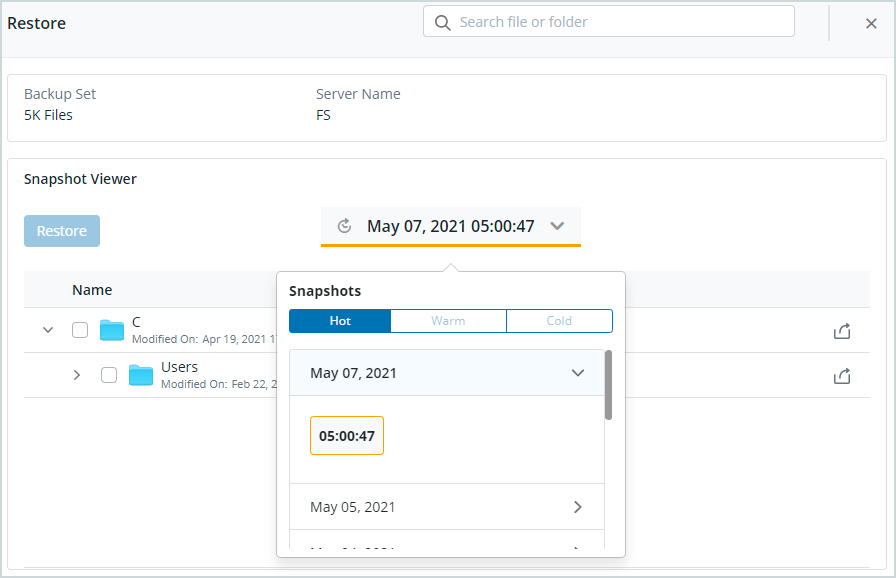
Warm recovery point restore
A Warm recovery point restore is restoring of point-in-time images of the backup data dating back to 90 days in time that are stored in the warm storage. Such a restore operation continues until the server data is restored to the specified location.
To locate Warm recovery points, select the required backup set from either the server details page, or the File Backup Sets page and then click Restore. The recovery point Viewer displays the date and timestamp of the latest recovery point. Click the dropdown next to it, click the Warm tab and then select the recovery point that you want to restore from.
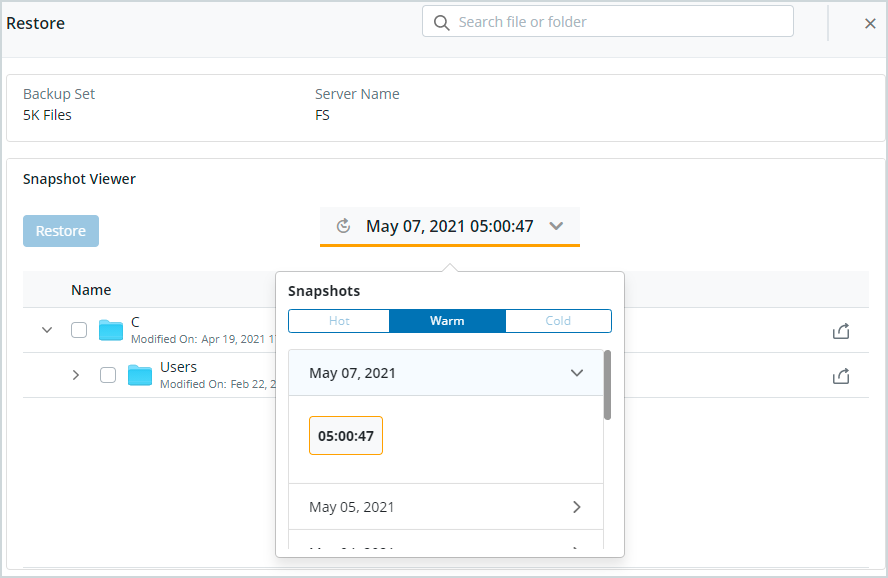
Cold recovery point restore
The availability of this feature is limited based on the license type, region, and other criteria. To access this feature, contact your Druva Account Manager or Druva Support. This content is subject to change based on the continuous improvements to this feature.
Cold recovery points are point-in-time copies of backup data older than 15 days. These recovery points are stored in the Amazon Glacier Deep Archive. To restore data from cold recovery points, data needs to be first retrieved from Amazon Glacier Deep Archive before a restore can be triggered. At the time of restore, data from the cold tier is retrieved, moved temporarily to the warm tier, and then restored. Once you click Restore and initiate the restoration process, the data retrieval from cold tier and its restore from the warm tier happen automatically. Warmed up data is deleted from the warm tier after 10 days.
To restore cold recovery points
- Log in to the Management Console.
- Select the workload from the Protect menu. Note that if the All Organizations menu is enabled, you have to first select an organization and then select the workload.
- In the left navigation pane, click File Backup Sets.
- In the right pane, select the backup set that you want to restore and then click Restore.
- In the recovery point Viewer, click the Cold tab, select the recovery point, and then click Restore.
Quarantined and deleted recovery points
Quarantined recovery points
If your environment is infected with Ransomware, you can quarantine recovery points using Druva Realize. You can also quarantine the recovery points using theQuarantinerecovery points on a resource API. With Druva APIs, you can integrate Ransomware recovery with your existing security tools. You can also build custom scripts to automate action if there is a ransomware attack.
The availability of the ransomware feature in Druva Realize may be limited based on the license type, region, and other criteria. To access this feature, contact your Druva Account Manager or Support.
Quarantined recovery points have a lock symbol next to them.

Druva allows you to view the data in the quarantined recovery point and delete such recovery points. However, you cannot restore files from such recovery points. To view a list of quarantined files, see Audit Trails.
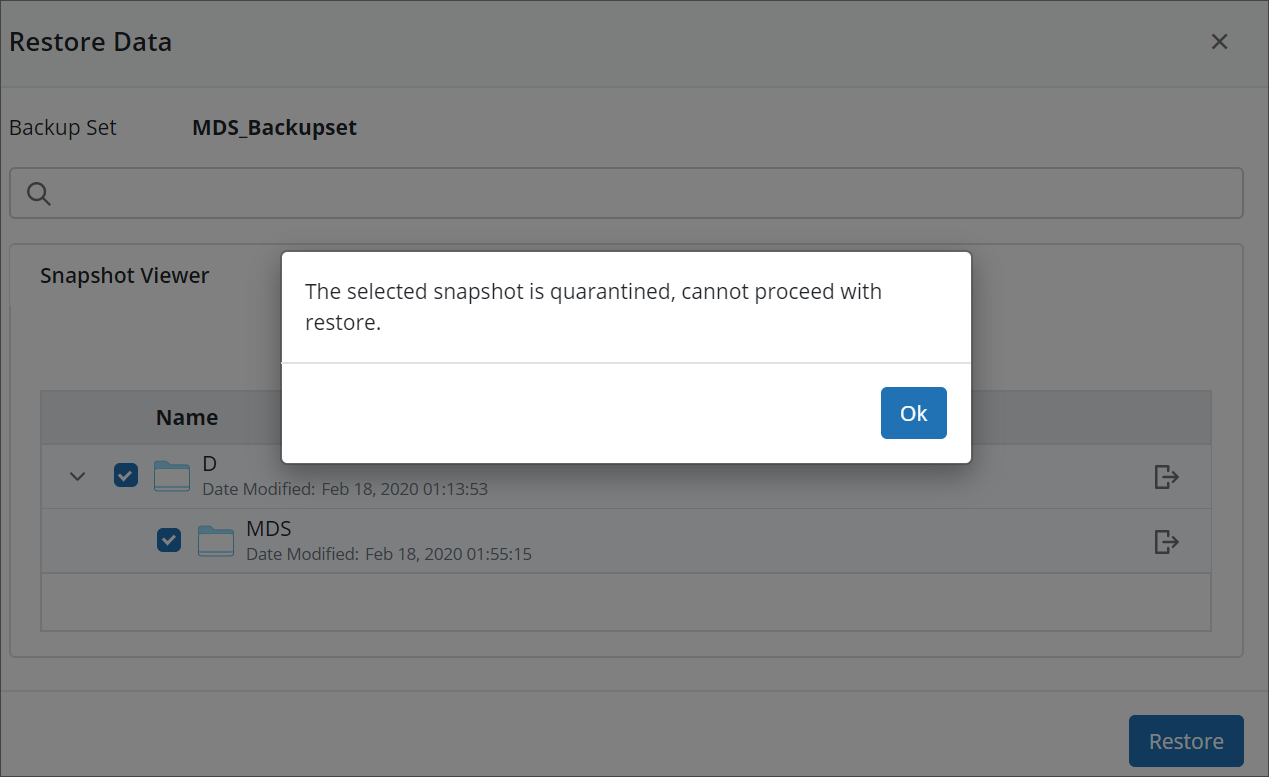
If you select a file(s) from search results and that file(s) belongs to a quarantined recovery points, you will get the following error message.
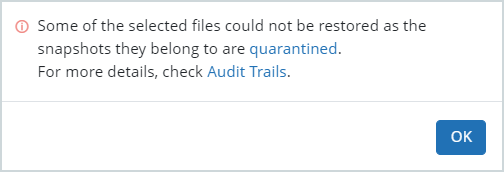
For more information, see Ransomware Recovery for Servers
Deleted recovery points
Recovery points are deleted from storage, after the duration in the retention settings has lapsed. There could be instances where the Recovery points have been deleted manually. The metadata information might still reference files that are part of these recovery points. These files are still visible through search, but cannot be restored.
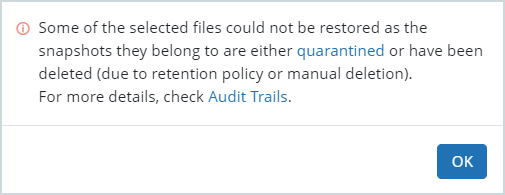
If you select multiple versions of a file and some of these versions belong to recovery points that are quarantined or deleted, Druva restores the files that can be restored. The list of all the quarantined and (or) deleted files that could not be restored is visible in the Audit Trails.
If all the files that you searched for and selected belong to recovery points that are quarantined or deleted or both, you are restricted from restoring them.
Curated recovery point restore
If your environment has infected resources, you can use Druva’s Ransomware Recovery feature to restrict these resources from interacting with other resources. However, there is always a risk that existing securely backed data might already be infected and when you restore such data, you run the risk of infecting the destination resource. This is where the Curated recovery point feature comes in.
Curated recovery point is a unique version of recovery point that is a collection of the latest, safest, and most secure version of a file in a single recovery point. The curated recovery point is created by processing files from multiple recovery points within a specified date range. For more information, see Curated Recovery points.
After a curated recovery point is created for a File Server, it is available for restore from the File Backup Sets page.
- In the navigation pane on the left, click File Backup Sets.
- Click a backup set in the right pane. The Summary tab is displayed by default. Go to the Backups tab.
- The Curated recovery point card is displayed in the Backups tab and you can restore data from this recovery point.
Note: Recovery points with the
 symbol next to them indicates that they are locked and used for creating the curated recovery point (in green).
symbol next to them indicates that they are locked and used for creating the curated recovery point (in green).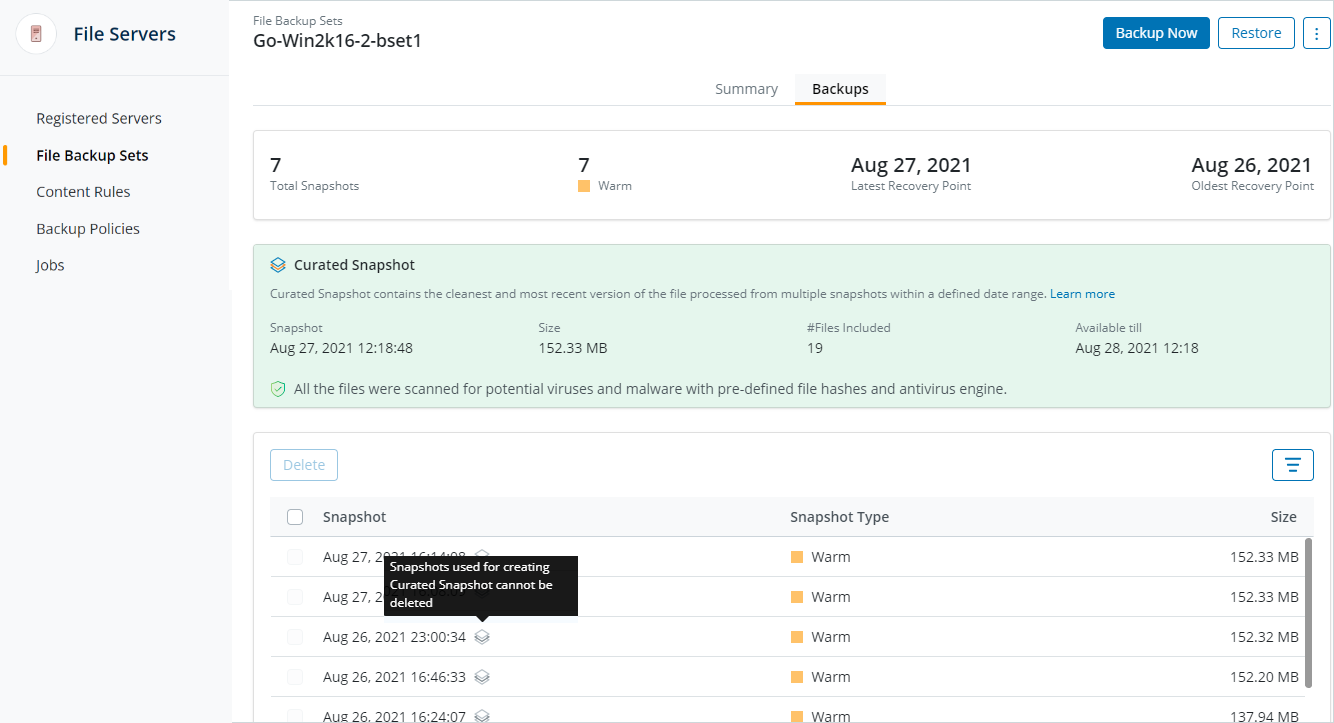
Note: Druva allows you to view the data in the curated recovery point. However, you cannot delete the recovery points that are used to create a curated recovery point. In addition, you cannot delete the curated recovery point (in green) from Druva, but can only delete it from Ransomware Recovery.
- Click Restore, the Recovery point Viewer window is displayed with the curated recovery point information.
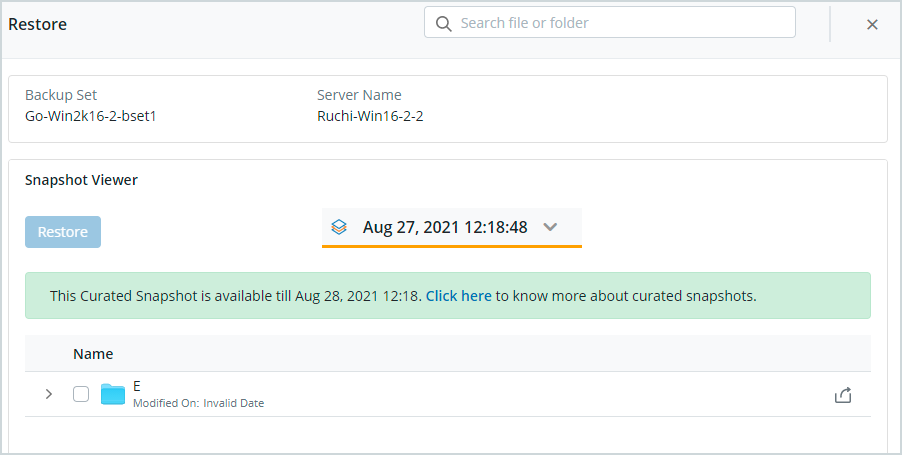
- The Recovery point Viewer displays the date and timestamp of the latest recovery point. Click the drop-down next to it. The curated recovery point is pre-selected.
Note: Restore from curated recovery point is supported only for Hot and Warm recovery points.
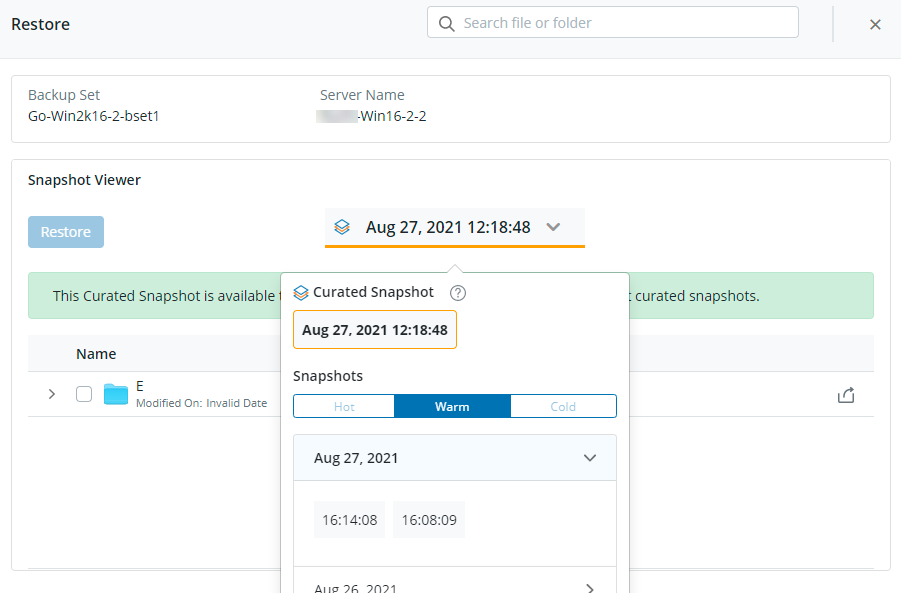
- Click Restore.

